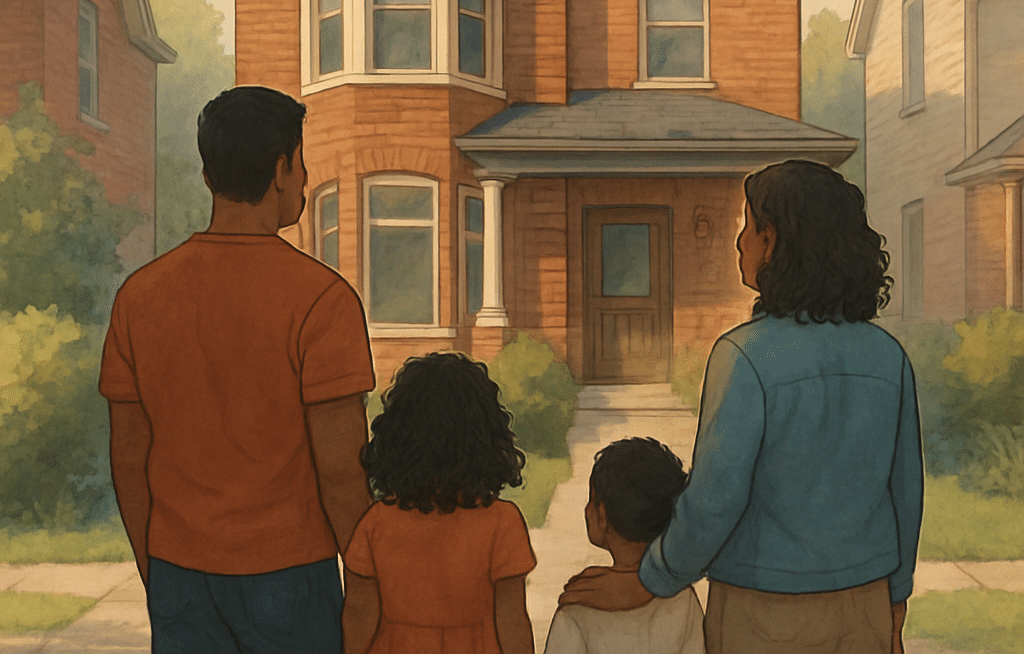Finding the perfect family-friendly neighbourhood is a critical step in creating a happy home. At The Halyard Group, we understand the importance of thorough neighbourhood research when making this life-changing decision.
Our expert tips will guide you through evaluating school quality, safety measures, and community amenities to ensure you choose the best location for your family’s needs. We’ll also explore transportation options and accessibility, helping you make an informed choice for your new home.
How to Evaluate School Quality for Your Family
Decoding School Rankings and Performance Metrics
When you choose a family-friendly neighbourhood, the assessment of school quality and educational opportunities takes center stage. School rankings from reputable sources (like the Fraser Institute) offer valuable insights into academic performance, student progress, and overall school effectiveness for more than 20 years. However, these rankings shouldn’t be your sole guide. You need to examine standardized test scores, graduation rates, and student-to-teacher ratios for a comprehensive understanding.
Exploring Extracurricular Activities and Programs
A well-rounded education extends beyond the classroom walls. You should investigate the extracurricular offerings of local schools. Try to find a diverse range of activities including sports, arts, music, and academic clubs. These programs enhance your child’s skills and foster social development and community engagement.
The Value of Educational Resources in Your Neighbourhood
The proximity to libraries, museums, and educational centers can significantly supplement your child’s learning experience. The uneven distribution of educational resources leads to an obvious gap in academic performance between urban and rural students.
When you evaluate neighbourhoods, pay attention to the presence of specialized educational facilities. The Ontario Science Centre, for example, provides hands-on learning experiences that can ignite a lifelong interest in science and technology.

Balancing School Quality with Other Factors
While school quality plays a pivotal role, it’s just one piece of the puzzle when you select a family-friendly neighbourhood. The best family neighborhoods in the GTA offer a unique blend of community, safety, education, and amenities that make them ideal for families.
As you move forward in your search, the next crucial step involves evaluating the safety and community amenities of potential neighbourhoods. These factors work hand-in-hand with educational quality to create an ideal living environment for your family.
How Safe Is Your Neighbourhood
Decoding Crime Statistics
Safety stands as a top priority when you select a family-friendly neighbourhood. Start your research with local crime statistics. The Toronto Police Service offers a comprehensive Crime App that maps incidents across the city. This tool allows you to filter by crime type and date range, providing a clear picture of safety trends in potential neighbourhoods. The app provides information on homicide, shootings, and major crime indicators (MCI).
For example, in 2022, the Leaside-Bennington area reported only 1.58 violent crimes per 1,000 residents (significantly lower than the city average of 4.19). Such data empowers you to make informed decisions about neighbourhood safety.

Beyond the Numbers: Community Safety Measures
Statistics tell only part of the story. Visit potential neighbourhoods at different times of day to observe the environment firsthand. Look for:
- Well-lit streets
- Active neighbourhood watch programs
- Visible police presence
These elements contribute to a safer community atmosphere.
Family-Friendly Amenities
Safe neighbourhoods often feature an array of family-oriented amenities. The City of Toronto maintains numerous parks and playgrounds, offering ample opportunities for outdoor activities. Some examples include Sunnydene Park, Kilgour Parkette, Blythdale Greenbelt, Stratford Park, Sherwood Park, Charlotte Maher Park, Bessborough Parkette, and Howard Talbot Park.
Community Engagement Opportunities
Strong communities foster safety. Investigate local community centres and family-oriented events in your potential neighbourhoods. The Toronto Public Library system hosts numerous family programs across its branches, including storytimes, magic shows, crafts, and coding activities for kids and families.
Many neighbourhoods organize annual events like street festivals or holiday celebrations. These gatherings not only provide entertainment but also strengthen community bonds, contributing to a safer environment.
Transportation and Accessibility
As you evaluate safety and community amenities, consider how these factors align with your transportation needs. A neighbourhood’s walkability, bike-friendliness, and access to public transit can significantly impact your daily life and overall safety. The next section will explore these aspects in detail, helping you find the perfect balance for your family’s lifestyle.
Etobicoke is known for its safe neighbourhoods with strong community bonds, making it an excellent option for families seeking a secure environment.
How Accessible Is Your New Neighbourhood
Commute Times Impact Daily Life
49.2 per cent of commuters experienced heavy congestion in the Greater Toronto and Hamilton Area (GTHA) in 2024. This significant impact highlights the importance of choosing a neighbourhood with efficient transportation options.
To evaluate potential commute times, use Google Maps to simulate your journey during peak hours. The Toronto Transit Commission (TTC) trip planner can help you estimate public transit travel times. Factor in school drop-offs and pick-ups when calculating your daily commute.

Public Transit Options in Toronto
Toronto offers an extensive public transportation network. The TTC operates subways, streetcars, and buses throughout the city. The TTC surpassed 33 billion riders since its inception in 1921, underscoring the system’s importance to city residents.
When researching neighbourhoods, look for proximity to subway stations or major bus routes. GO Transit serves as another option for those commuting to downtown Toronto from suburban areas. In 2019, GO Transit served over 77 million passengers, making it a vital link for many families.
Walkability and Bike-Friendliness
A neighbourhood’s walkability can significantly impact your lifestyle. Walk Score rates neighbourhoods on a scale of 0-100 based on their walkability. Neighbourhoods like Cabbagetown and Bay Street Corridor boast walk scores above 90, indicating most errands can be accomplished on foot.
Cycling has gained popularity in Toronto. The city offers various types of cycling infrastructure. Check the Toronto Cycling Map to identify bike-friendly routes in potential neighbourhoods. Areas like the Waterfront and Midtown offer extensive cycling infrastructure, making them attractive options for active families.
Accessibility for All Family Members
Consider the accessibility needs of all family members when choosing a neighbourhood. Look for areas with well-maintained sidewalks, curb cuts, and accessible public transit options. These features benefit not only those with mobility challenges but also families with strollers or young children.
Future Transportation Developments
Research planned transportation improvements in potential neighbourhoods. New transit lines or road expansions can significantly impact accessibility (and property values) in the coming years. Stay informed about upcoming projects that might enhance your chosen area’s connectivity.
Final Thoughts
Choosing the right neighbourhood for your family shapes your daily life and future opportunities. Thorough neighbourhood research helps you invest in your family’s well-being and happiness. You must evaluate school quality, safety measures, community amenities, and transportation options to lay the groundwork for a fulfilling family life.
The perfect neighbourhood looks different for every family. Your specific needs and preferences should guide your decision-making process. Focus on the factors that matter most to your family’s lifestyle (whether it’s top-ranked schools, abundant green spaces, or a short commute).
At The Halyard Group, we understand the complexities of finding the ideal family home in the Greater Toronto Area. Our expertise in helping families upsize to larger homes ensures that you’ll find a neighbourhood that truly fits your family’s needs. We maximize the value of your current home and guide you towards a new one that supports your family’s growth and aspirations.
If you’re ready to explore your options, connect with us today to start your search with confidence and expert guidance.





